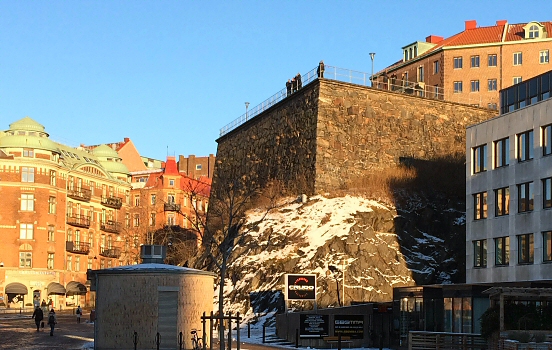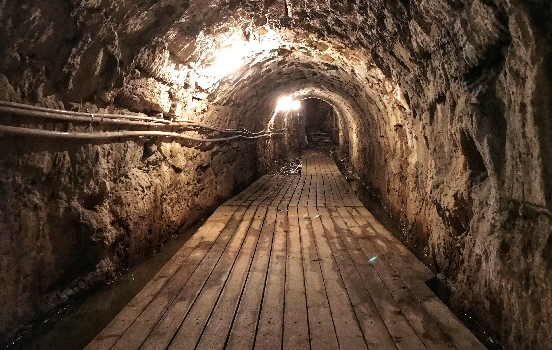Back in 1624, Gothenburg looked less like a city and more like someone had drawn a ring of steel around a vulnerable prize. The Swedes with Dutch engineers in tow began laying down bastions. Massive fortifications that turned this patch of earth into one of Northern Europe’s most impenetrable strongholds.
These walls stood for nearly two centuries until 1807, when a demolition contract sealed their fate. Over the next ten years, the city’s defenses were stripped away piece by piece, making room for trade and expansion.
 Bastion tunnels under Gothenburg.
Bastion tunnels under Gothenburg.
Today, only Carolus XI Rex still rises above the cityscape at Esperantoplatsen. It’s a stubborn relic, defying time. Inside its depths lies the “powder room”, built around 1770. It was supposed to store gunpowder, but the builders never solved the moisture problem.
The room is damp, salt-stained and unwelcoming. White streaks mar the walls, salt from years of seepage. From the ceilings hang delicate soda straws (speleothem) and stalactite-like drip formations, born of centuries of persistent water infiltration.
Elsewhere, the visible fragments of Gothenburg’s defenses vanished like whispered legends. In the basement of cinema Biopalatset, you’ll find a scrap of original wall. A relic out of time, squeezed into our modern lives.
 Carolus Rex above Esperantoplatsen.
Carolus Rex above Esperantoplatsen.
Gothenburg didn’t become a trading hub by accident. It evolved by tearing down the things that held it back. These bastions were once suppressors. Today, their remains are doorways into something older.
Beneath the pavement and under the foundations lies the city’s bones. The walls have been torn down, but their stories persist in salt, shadow and stone. Walk those tunnels, feel that damp air, and you’re walking closer to the city’s soul.
 Bastion tunnels under Gothenburg.
Bastion tunnels under Gothenburg.
Below the vanished bastion known as Carolus Dux, you can crouch into dark, mud-slick tunnels. They are low, damp, haunted, and yes, you’ll likely meet a spider or two.
Related posts
Comments
No comments yet.
Leave a reply